If you've ever debated on baking a cake in a glass pan versus a metal pan, or had cookies burn on the bottom at 350 ºF within a "reasonable" amount of baking time, this post is for you! Find out everything you need to know about baking pans and bakeware, from how the material and the colour of the pan have an impact on baking to why pans may warp, bend, or rust.
The point of this post isn't to have you throw out all your bakeware and buy new. On the contrary, what I am hoping is that this post will help you better understand how your baking pans affect your baking and how to make adjustments so that you know how to make adjustments and adapt, regardless of what bakeware you're using!
If you want to easily convert recipes from one pan size to another, I recommend investing in the complete baking conversion charts bundle to get conversion charts for ingredients, pans, temperatures, volumes, weights, and more.
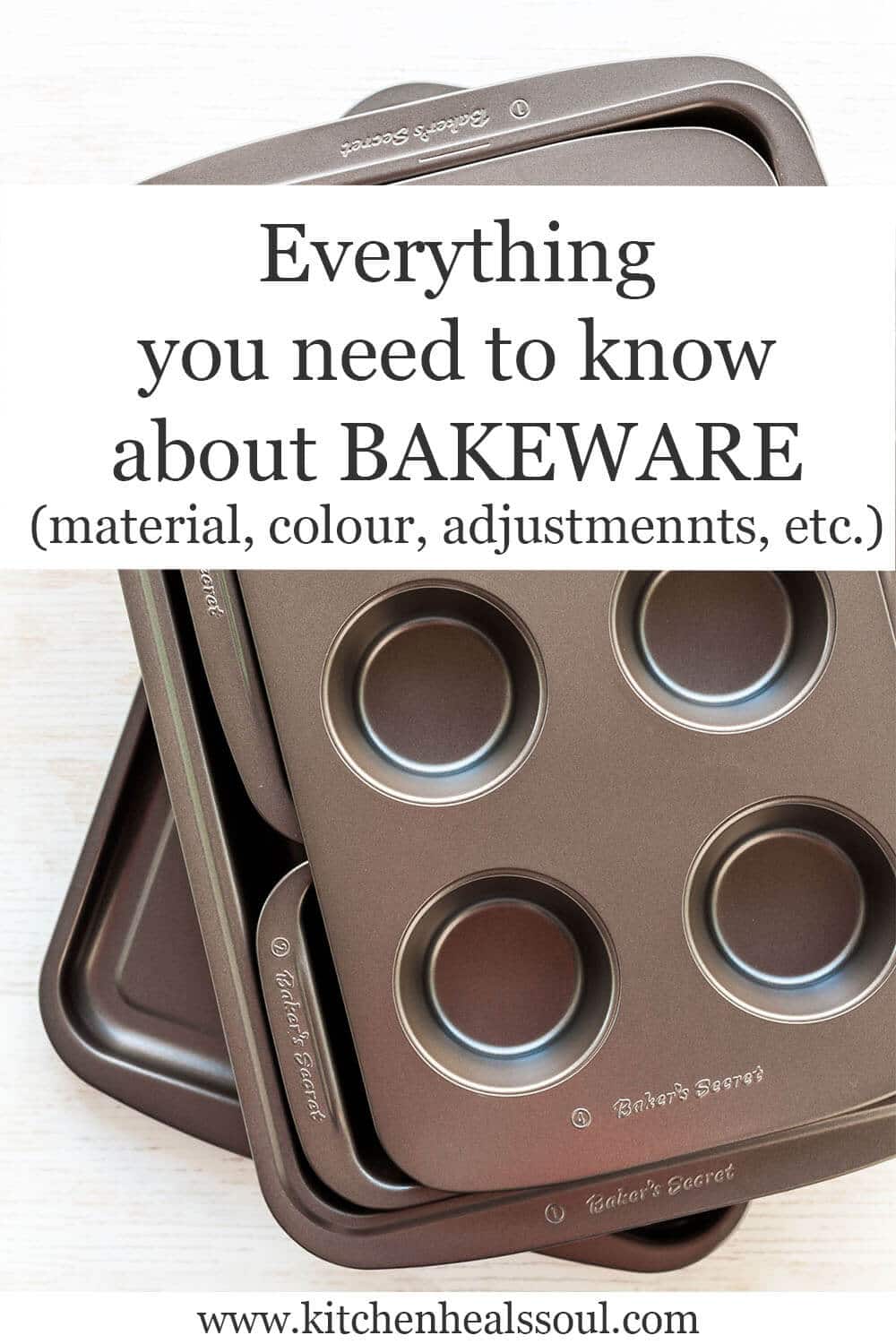
Jump to:
The impact of material on baking
Different baking pan materials behave differently in the oven, which can really throw off the baking time of a recipe. Baking times are highly dependent on the baking pan material, but once you know how each material reacts, you can adjust your baking temperatures and times accordingly, like a pro!
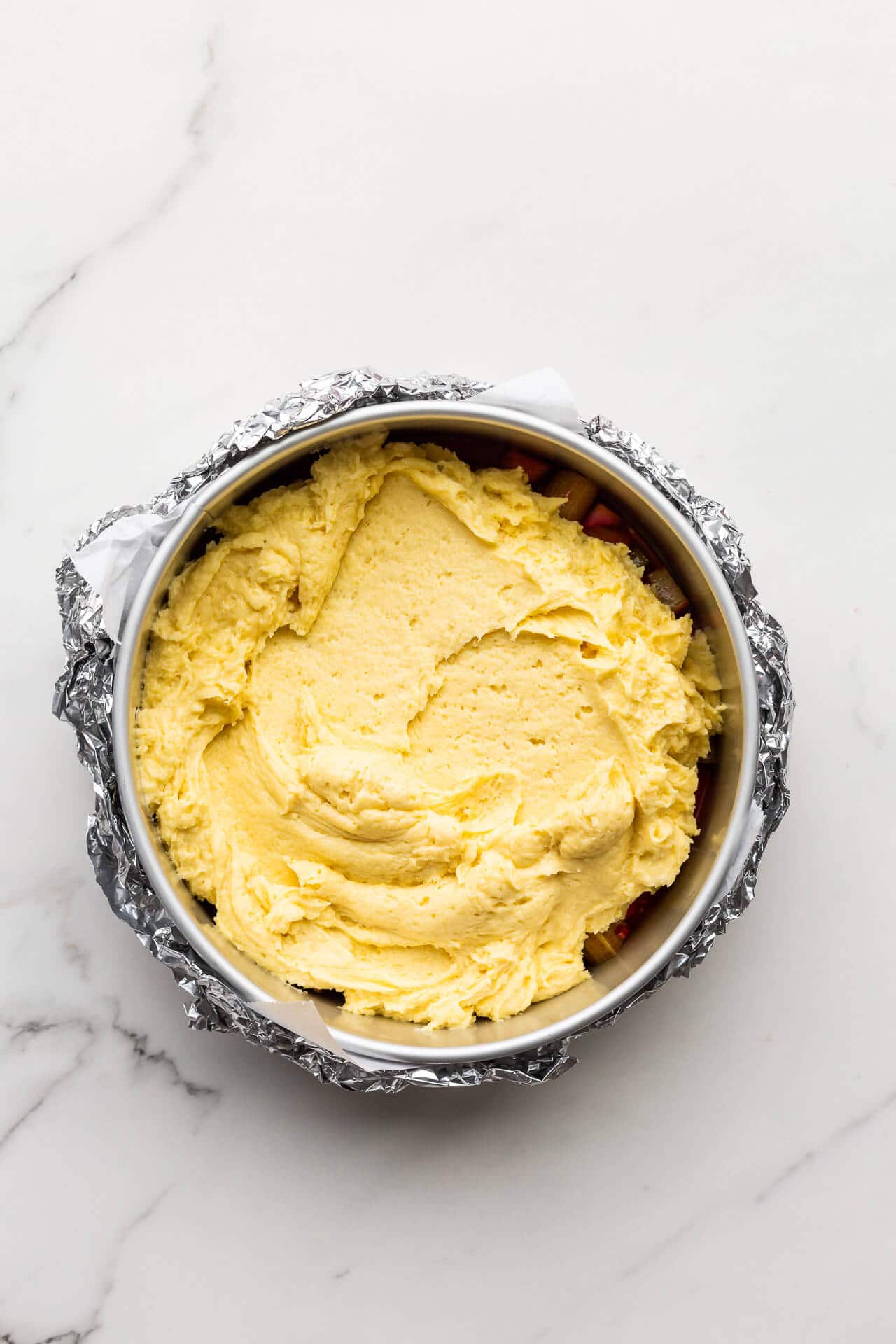
Aluminum
Aluminum is a great heat conductor, which means that the metal is good at giving off the heat it absorbs and transferring it to what you are baking. This is why aluminum bakeware is so popular. Ideally, you want to invest in top-quality aluminum pans that are crafted with an even sheet of metal that is thick: this way your baked goods will bake evenly in the pan. Poor-quality pans are sometimes made with uneven metal sheets, which leads to hot spots where the cake browns more in certain spots.
The problem with aluminum is that it is reactive and therefore if the pH of the food is low (acidic) or high (basic), the aluminum will react and may leach into foods. This isn't a problem for most recipes, but if you are baking a blueberry rhubarb crisp, for example, you would want to reach for a ceramic dish or something that is non-reactive.
I ran into problems with my bakeware when I baked this moist rhubarb cake: the rhubarb reacted with the pan, etching it and leaving black marks in places.
Stainless steel
Stainless steel is an iron alloy, meaning it's made from a mixture of metals and other non-metal materials. The metals vary from one type of stainless steel to another, as well as the percentages of each. What this means is that not all stainless steels are created equally and therefore their properties will vary depending on the quality used. In general, stainless steel isn't a great heat conductor, but it's popular because it's easy to clean, and doesn't tarnish or rust (unless your stainless steel is very bad quality).
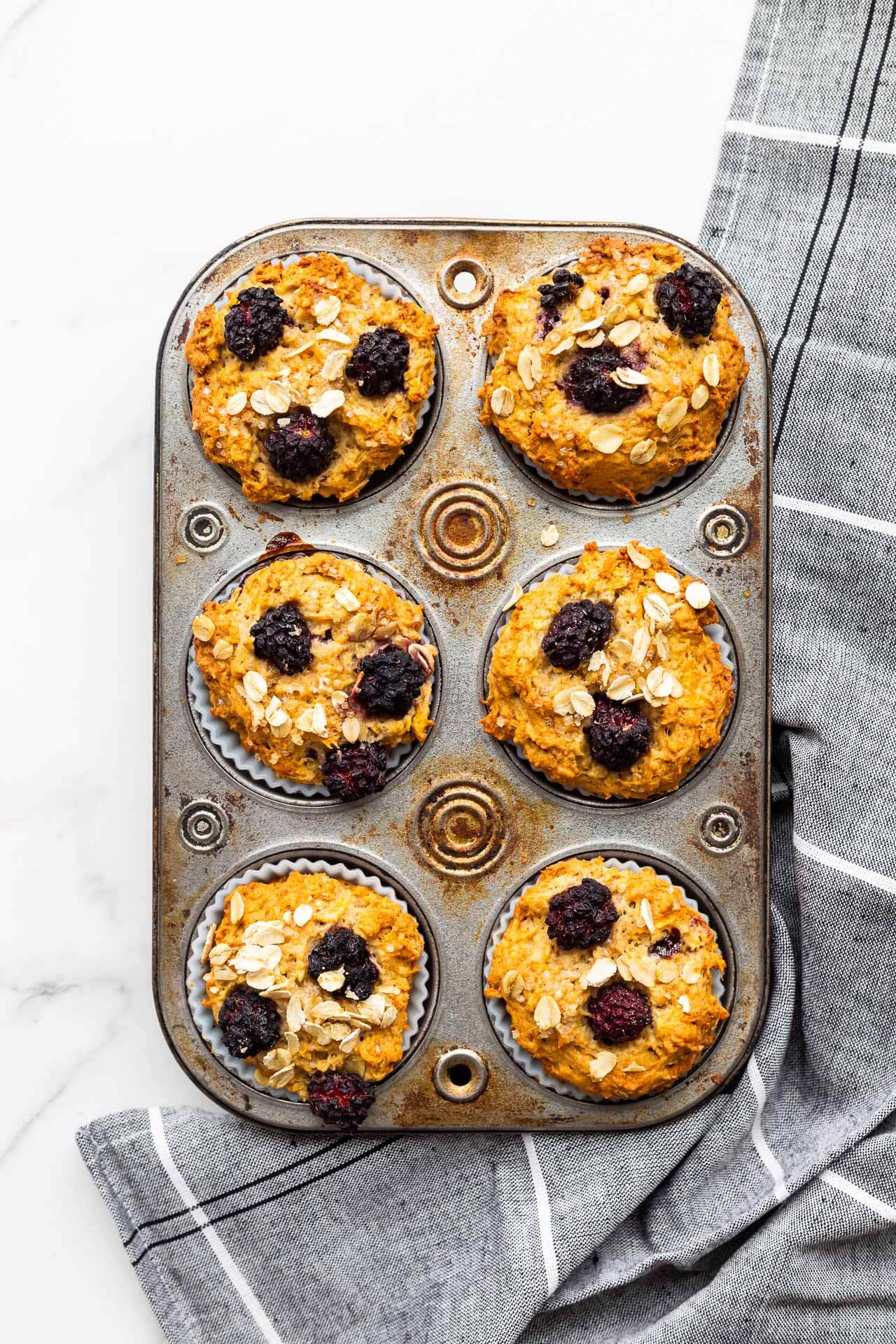
Silicone
Silicone is an insulator, meaning it's not good at conducting heat to your cakes and cookies. If you've ever baked a batch of cookies on a pan lined with a silicone baking mat and compared them to a batch baked on a parchment-lined sheet pan, the difference is quite striking: if you bake the cookies for the same amount of time, the cookies on the silicone liner will be under-baked and won't brown in the same amount of time as the cookies baked on parchment.
If you want soft cookies, baking on silicone is a great option! For cakes, nobody likes under-baked cake, so you will have to adjust and increase the baking time, inevitably if you bake a cake in a silicone cake pan.
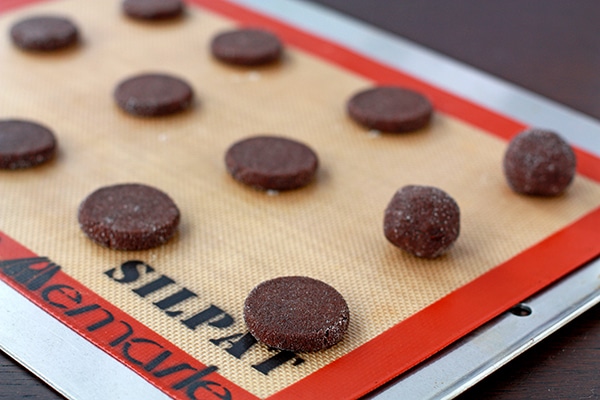
Glass
Glass is a poor conductor of heat, which means that glass isn't good at transferring heat from itself to what you are baking. Baking in glass is slower, meaning recipes take longer to bake. You will notice this, especially with pies, which take longer to brown on the bottom if you bake them on a glass pie plate. This is the reason I now bake my pies in metal pie plates, which do a better job of baking the bottom crust and browning it. Metal pie pans are one of my essential tools for making pie and my secret weapon to a properly baked pie crust on the bottom.
Glass is an insulator, meaning it's good at retaining heat. This is why glass baking dishes are so popular for casseroles: the glass baking dish can go from oven to dinner table, retaining the heat of the oven for longer so the food stays warm. Bake the same casserole in a metal pan, and the pan will rapidly lose heat when you place it on the table, so your food will go cold faster.
I recommend investing in the complete baking conversion charts bundle to get conversion charts for ingredients, pans, temperatures, volumes, weights, and more.
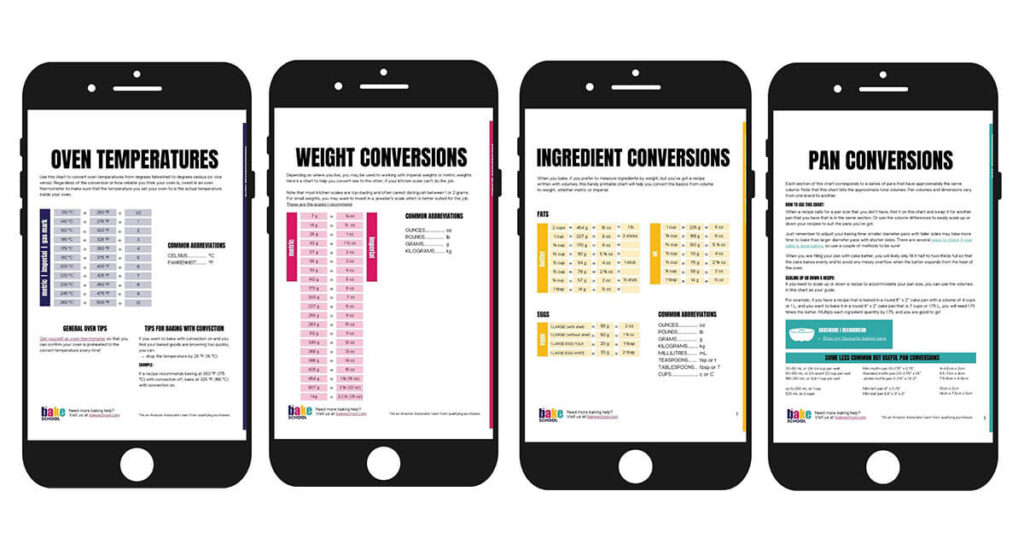
Cast iron
There's a reason why people love to bake and cook with cast iron pans that are passed on from generation to generation. Iron is a decent conductor and a well-seasoned pan is non-stick. The seasoning process involves brushing on a very thin, even coating of oil over the entire surface of the pan, even on the underside, and then baking on that oil in the oven at a very high temperature. The heat will cause the oil to polymerize into a non-stick polymer, which is why it doesn't wash off with soap and water.
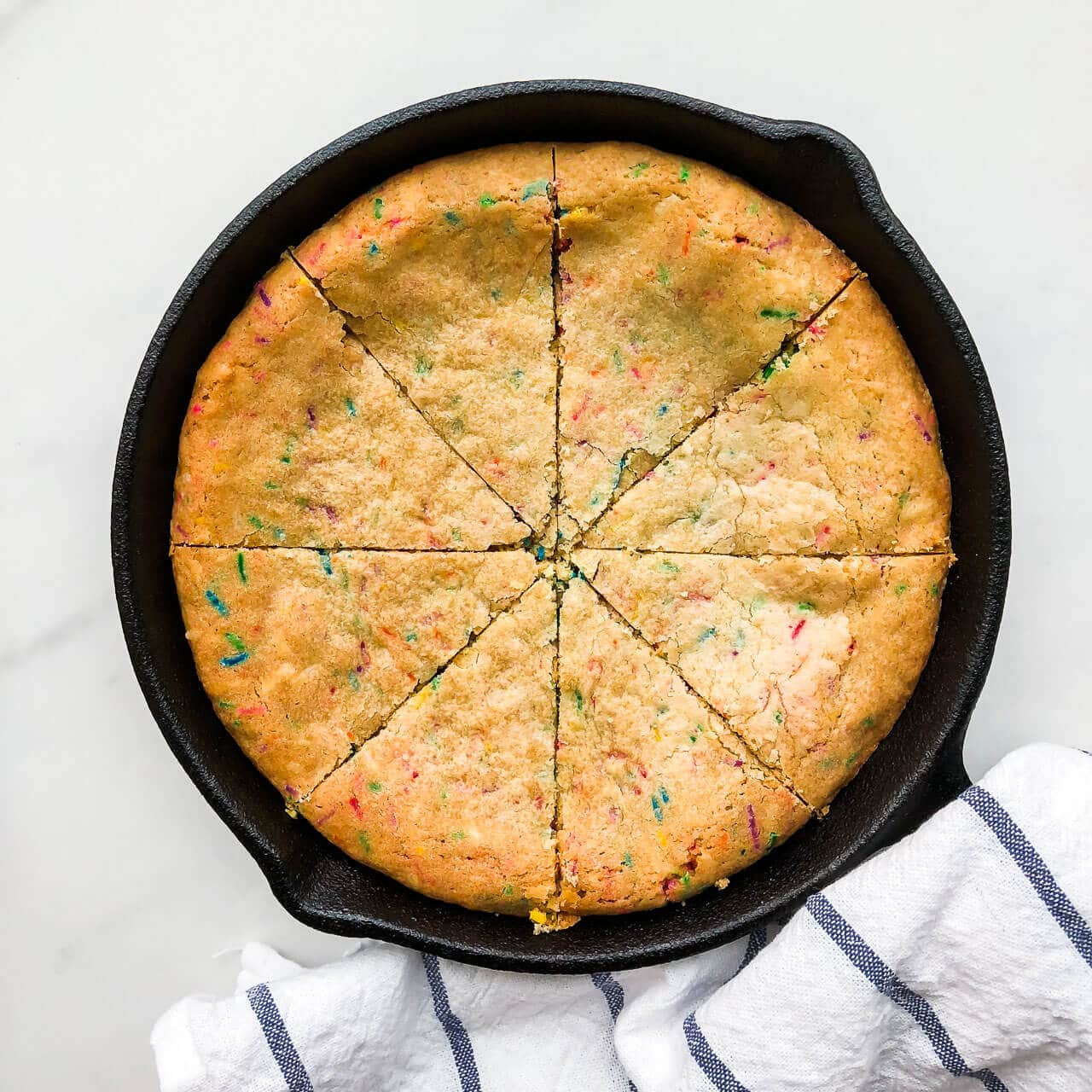
Ceramic
Like glass, ceramic is a poor heat conductor but a great insulator, which means it's not good at transferring heat to baked goods, but the pan is great at holding the heat, so useful if you want to serve the dish warm. This is why ceramic is a popular material in slow cookers designed to hold heat for as long as possible. It's also great for casseroles that you want to serve warm, table-side.
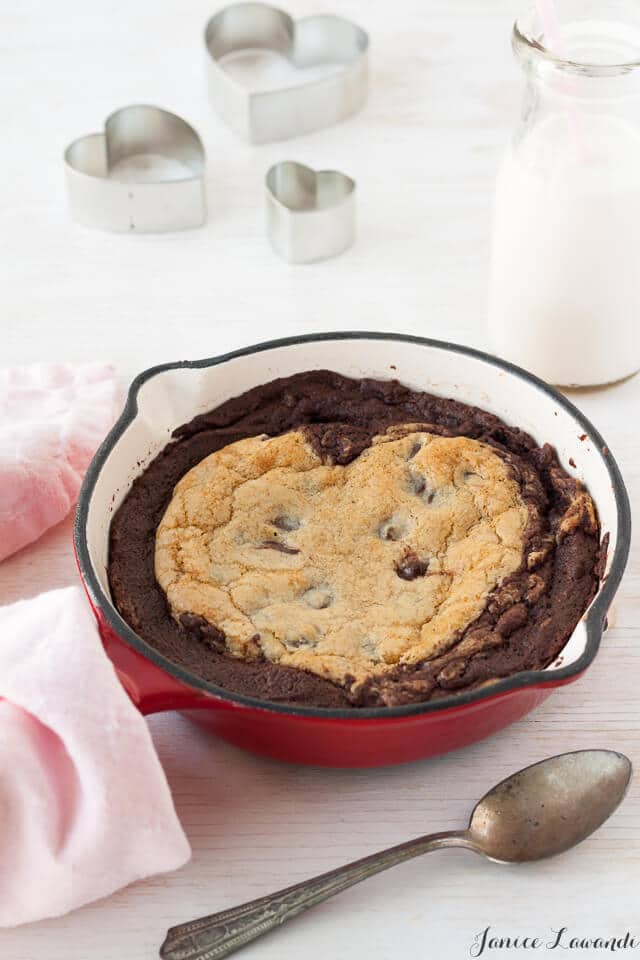
Enamel cast-iron
Some cast iron pans are finished with an enamel coating to protect the iron and prevent rusting. These pans have the heating capacity of cast iron that can transfer heat easily to baked goods, combined with a shiny non-stick coating that also holds heat well.
Insulated metal
Over a decade ago, insulated metal pans were quite popular, made from two sheets of metal with an air gap in between. Insulated pans appear thicker though they are made from two thin sheets of metal because of the gap between the layers. That air makes it very difficult to burn cookies baked on this type of sheet pan
Insulated pans grew in popularity because they reduced the browning of baked goods, especially cookies, leading to softer, lighter-coloured cookies. If you are a fan of under-baked cookies, consider switching to insulated pans (or using a silicone liner as mentioned above).
The impact of the gauge of the metal on baking
The higher the gauge, the thinner the pan. The lower the gauge, the thicker the pan. You might not know the gauge of the sheet of metal used to make your bakeware, and that's okay! The important thing is to remember that thicker aluminum pans heat up more and your baked goods will bake faster in a thicker metal pan than in a thinner metal pan.
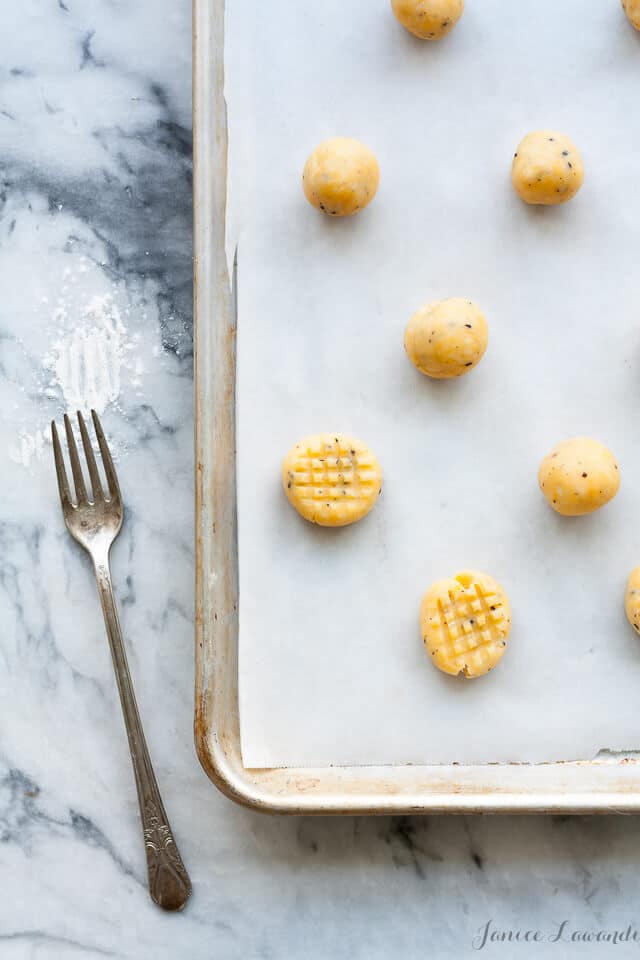
The impact of pan colour on baking
Yes, the colour of your bakeware can affect how much your baked goods brown in the oven and you should make adjustments to the baking temperature according to the bakeware you are using.
Dark finish vs light finish
Darker materials radiate more heat than lighter materials. So a pan with a dark, dull (matte) finish will radiate the most heat, while a pan with a shiny aluminum finish will radiate the least.
Pans that radiate the most heat are the best at transferring heat to baked goods. With darker pans, I recommend dropping the oven temperature by 25 ºF, so baking at 325 ºF instead of 350 ºF in order to achieve the same bake in roughly the same time as a dessert baked in a lighter pan. Why? Darker finishes radiate more heat, which means your baked goods will be exposed to a higher temperature on the bottom in a dark pan versus a lighter pan. In order to mitigate this, drop the oven temperature.
In the same way, if your recipe was developed for and is suggesting you bake in a darker pan, then if you want to use a lighter colour pan, you should increase the oven temperature by 25 ºF. So bake the recipe at 375 ºF instead of 350 ºF to achieve the same bake.
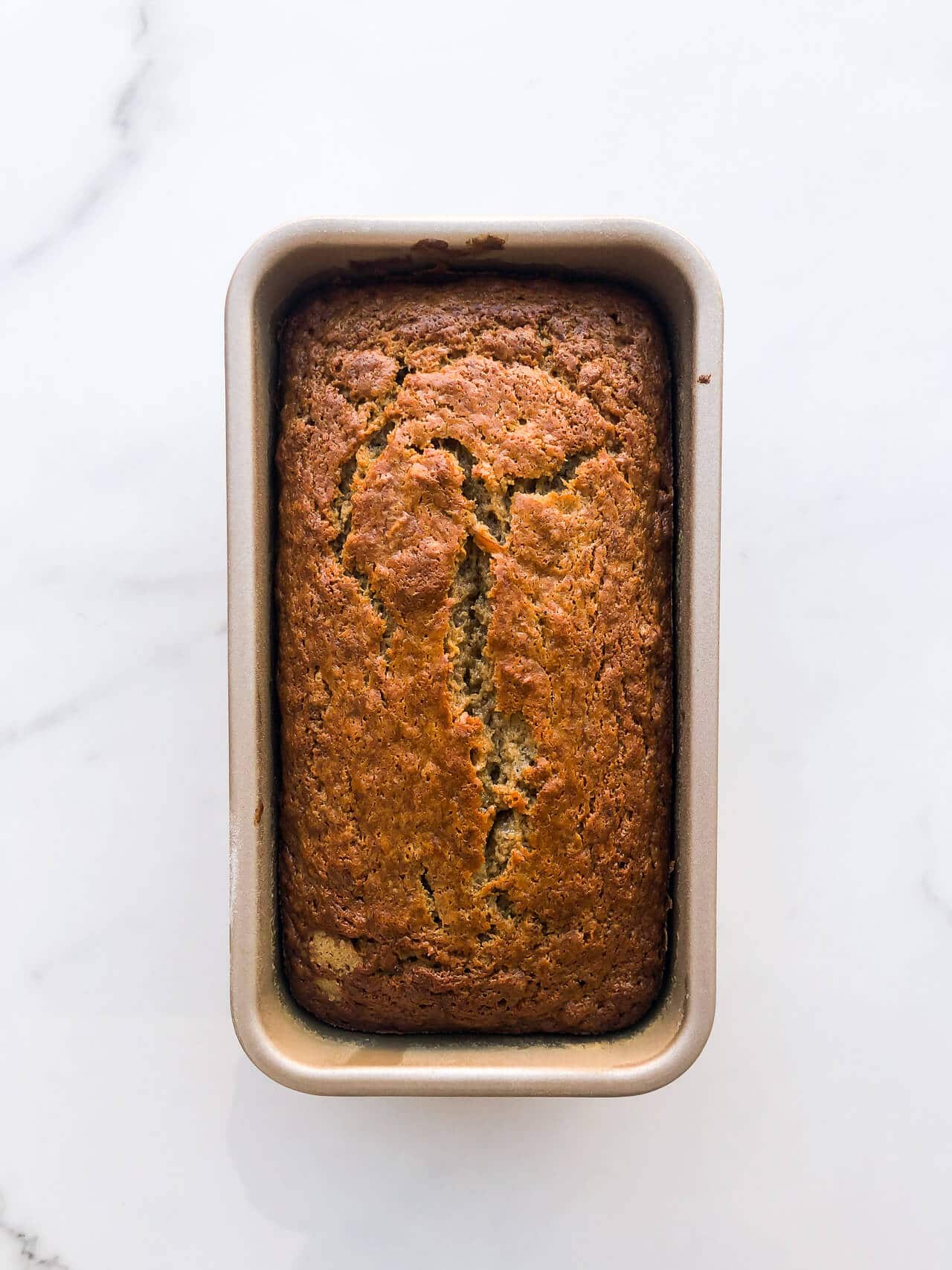
What types of pans should you buy?
At this point, knowing all of this, you might be wondering what are the best baking pans to invest in, so I'll break it down by the type of baked goods you would need them for:
- for cakes, invest in aluminum cake pans with a light finish, like the Wilton professional line of bakeware that is light in colour and has a matte finish. If you plan on making layer cakes, buy 3 cake pans of the same size and type. I like to bake in 6-inch cake pans and these are the Wilton Performance pans I use from Amazon.
- for quick breads and loaf cakes, I like pans with a lighter finish. Lately, I've been baking in OXO Good Grips pans with the gold non-stick finish (from Amazon). I love this line of pans, though I have noticed that the cake edges brown more than in lighter finish pans, so if you go with the gold pans, you may have to explore baking at lower temperatures (like 325 ºF instead of 350 ºF).
- for cookies, buy at least 2 sheet pans and preferably heavy duty with a light finish, preferably half sheet pans so that you can fit more cookies per pan, staggering them to allow for airflow. I like the Nordic Ware sheet pans on Amazon. On the subject of sheet pans, if you plan on baking pizzas or other recipes where you want the bottom to brown, invest in pans with a darker finish or else try increasing the baking temperature to ensure the bottoms brown properly.
- for pies, buy a metal pie plate with a darker finish, which will combine extra heat absorption with being a good heat conductor! It's the perfect combination for getting the pie crusts baked on the bottom so that you can avoid the dreaded soggy bottom of under-baked pies! These dark metal pans from Amazon work great.
- for cheesecakes, a light springform that has a good seal is essential. This will allow you to bake cheesecakes in a water bath, gently, thereby avoiding any cracks, but also this will reduce browning on the edges so that the cheesecake bakes more evenly. I like these Wilton springform pans on Amazon.
- for bundts, the best in the industry is Nordic Ware bundt pans. They have a special non-stick coating that prevents baked goods from getting stuck in intricate patterns and grooves. Nordic Ware pans are heavy duty and the company has a great reputation with good reason. The anniversary pan on Amazon is heavy duty and the pan I use on this website.
Tip: different pans are labelled and sold with different measurements. For example, bundt pan sizes are expressed as a volume (for example, a 10-cup bundt pan) whereas a loaf pan is labelled with the dimensions of the length and width (for example, a 9x5-inch pan). Read all about how to measure cake pan sizes to find out more.
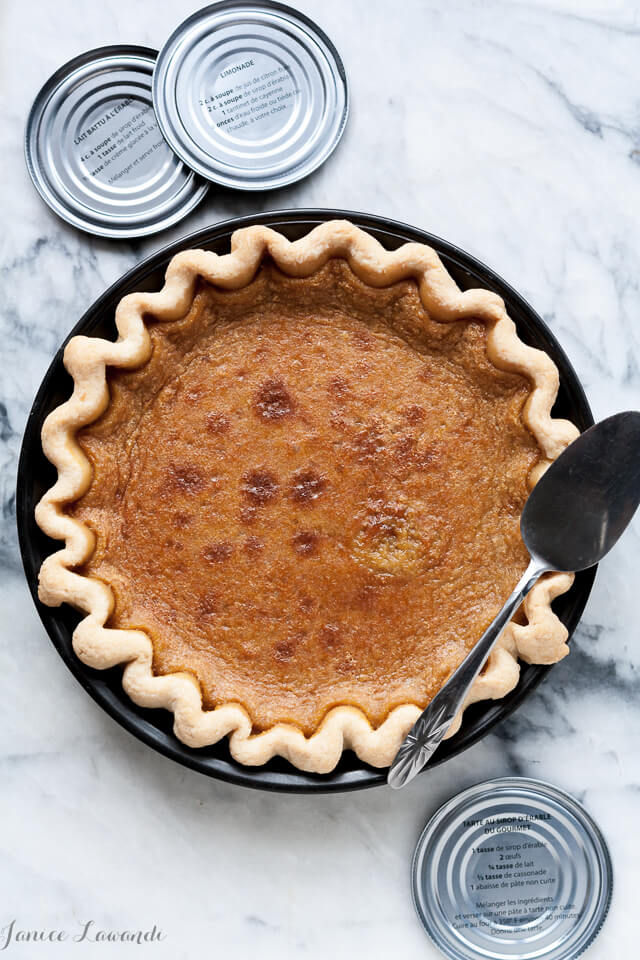
FAQ
Non-stick bakeware has a coating applied to the surface of the metal to prevent baked goods from sticking. It works pretty well, so you don't have to grease non-stick bakeware. But that being said, I usually prepare all cake pans the same way, with grease and flour to prevent any issues. It's extra insurance so that there will be no sticking, regardless of what you are baking.
If the non-stick coating on your bakeware is damaged, there's a risk that it may chip off further into your food when you serve from it. If you have pans where the non-stick coating is damaged, it's best to replace the bakeware.
You can bake a cake in any pan, even a cast-iron skillet. Still, I prefer to bake cakes in pans made of anodized aluminum, which is a good heat conductor.
Do you preheat the oven with the baking pan inside?
The first step of most recipes is to preheat the oven to the desired baking temperature suggested by the recipe. When you preheat the oven, the goal is to warm the oven up to the temperature you want to bake at. During the preheating phase, the heating elements are working hard to heat up the oven, meaning that they are giving off a ton of heat, more so than the elements give off later to maintain that temperature. This is the reason why you should give your oven plenty of time to preheat, before you begin baking. You want to avoid exposing your baked goods to that blast of heat from the heating elements, which is unpredictable at best.
For some recipes, you may preheat the oven with the baking pan INSIDE the oven. Popovers, Yorkshire puddings, and Dutch baby pancake recipes tell you to preheat the oven with the pan inside because these recipes need to be baked in a hot pan. The heat of the pan is what gives the batters a burst of energy to puff and rise up.
For other recipes, cakes, cookies, bundts, etc., you want to use baking pans that are at room temperature. Don't use a hot pan or a pan that you preheated in the oven unless the recipe specifies to do so!
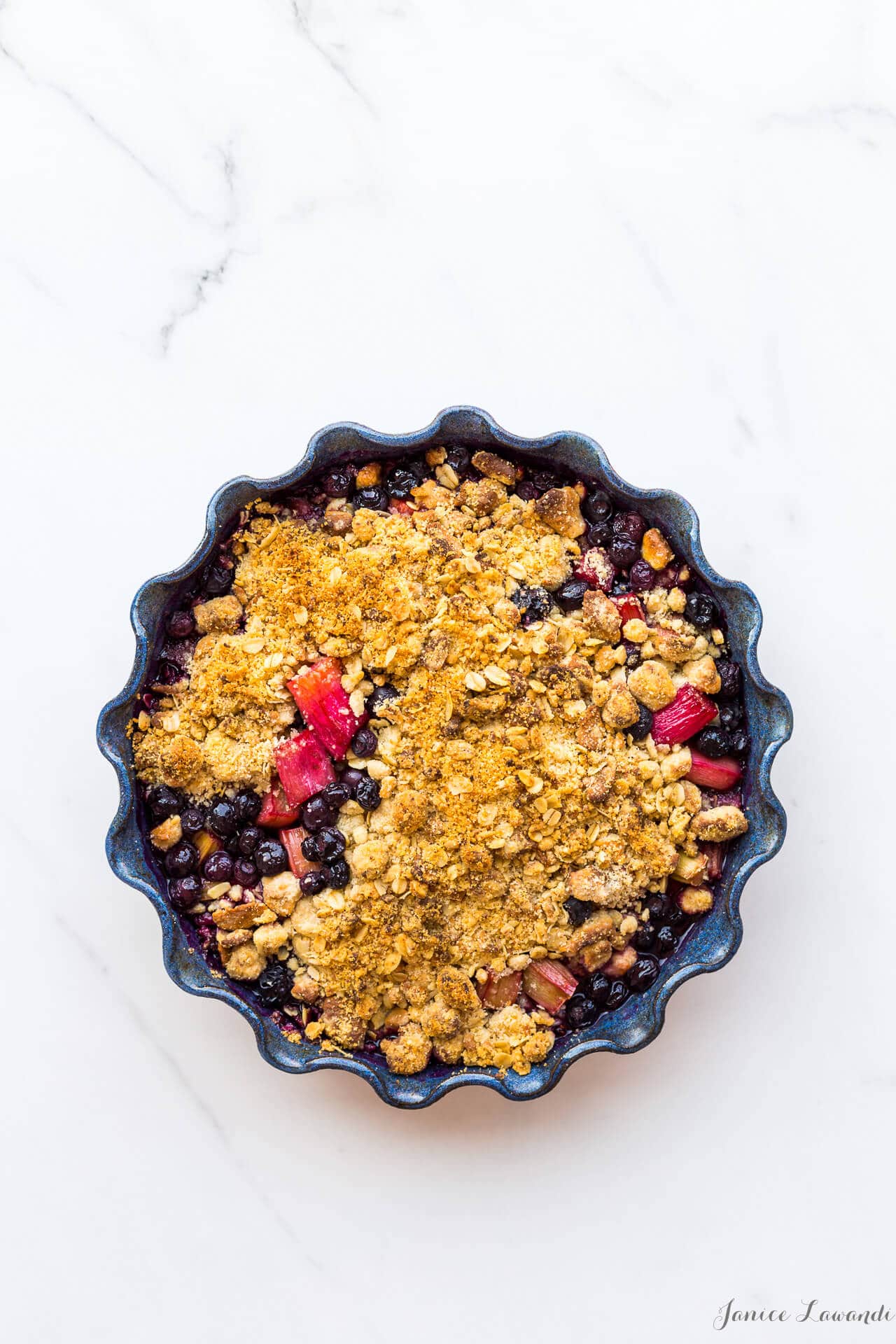
Shallow vs deep baking pans
When it comes to filling pans with cake or muffin batter, there are a few rules you want to follow to ensure that your baked goods bake properly in a reasonable amount of time.
- Don't overfill the pan. There should be at least an inch between the surface of the batter and the top of the cake pan. For muffins, as a rule, fill the cups ¾ full, otherwise, the cake may overflow as it bakes, but also you may have a hard time baking the middle of the cake properly, and then your cake may collapse! Sometimes, the trick for jumbo muffins is to overfill the muffin cups, and the consequences of this are obvious: the muffin may overflow and stick to the edges of the muffin pan, and the muffins may take much longer to bake.
- For layer cakes, split the batter between two or three cake pans rather than baking one very tall cake that you split into layers after. I have some 3-inch deep professional cake pans, but cakes baked in this pan take FOREVER to bake properly, and you may have trouble judging if your cake is done baking or not. For 3-layer cakes, I prefer to split the batter between three identical cake pans, rather than baking one layer that I split into three.
I recommend investing in the complete baking conversion charts bundle to get conversion charts for ingredients, pans, temperatures, volumes, weights, and more.
Why do baking pans warp or bend in the oven?
Sometimes you will hear a bang coming from the oven. It's the sound of the sheet pan in the oven suddenly bending or warping from the heat. This happens when pans have a thinner construction that is more prone to bending with temperature changes. Usually, higher-quality pans won't do this, which is why it's important to invest in good brands that make thicker pans that are higher quality. Wilton and Nordic Ware are two brands that make heavy-duty, durable pans, for example.
Why do baking pans rust?
If your pans are supposedly stainless steel, don't forget that stainless steel is an alloy made from several types of metal, combined into one. Not all stainless steels are equal, and some are more durable and rust-proof/stainless than others. I've noticed with very cheap metal bakeware, for example, the stainless may rust and with whisks, for example, they can even impart a metallic flavour into cooked custards and curds that are whisked on the stove. It's really bad when this happens.
Older pans may be made of iron and the metal may be prone to rust when in contact with water and air. It's not ideal to bake anything in a rusted pan because that metal rust may leach into your food.
Cast iron pans can rust if exposed for prolonged periods to moisture. For this reason, it's important to dry pans thoroughly. I go as far as baking the washed pan in the oven to ensure all the water evaporates completely so that the pan is completely dry before I put it away.
How to prevent it
When you wash metal bakeware, make sure to dry it immediately and thoroughly with a towel to avoid any water damaging your pans.
Why do glass pans explode?
Glass bakeware is made to be baked with and is shatterproof, but some bakers have experienced a glass pan shattering or exploding. This would happen if the glass is damaged and then undergoes an extreme temperature change, from cold to hot, or hot to cold. Be sure to inspect any glass bakeware you use to make sure there aren't any defects or any damage that you can see. This way, you're less likely to run into problems down the road.
Best practices for cleaning bakeware
There's a reason why almost all of the recipes on this website start with a variation of "line the pan with parchment paper." I loathe washing my bakeware and taking the time to carefully prepare a pan for baking saves me a ton of time in the long run. Soaking the pan in hot soapy water for 5 minutes usually lifts any stuck-on food, just like with most cookware. Avoid using any scrubbing brushes that are too rough on baking pans, especially if they have a coating or finish on them, which you could damage with excessive scrubbing.
Need more help with cake pans?
Most of us aren't born with the natural ability to guess the exact size of any cake pan. If you would like to learn more about converting recipes from one pan type to another, you need the Baking Pan conversions chart.
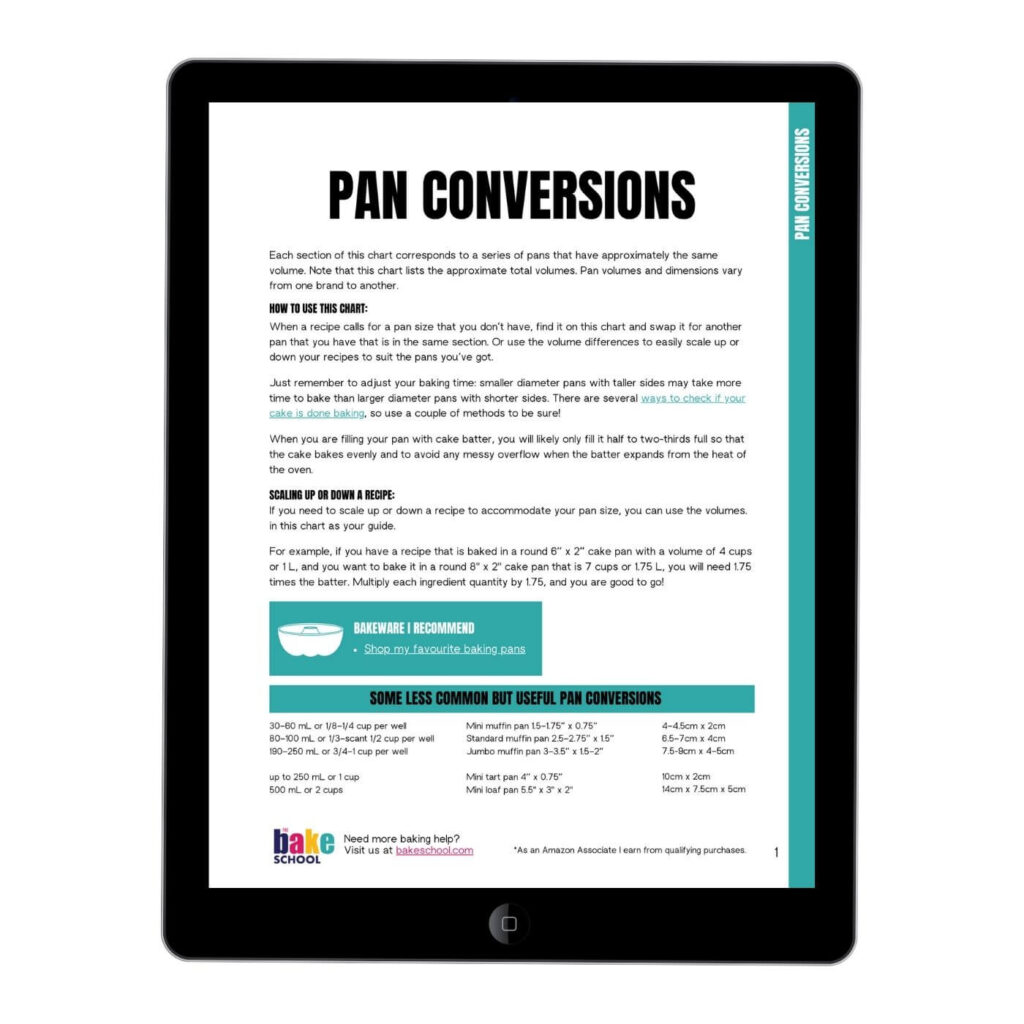
Pan conversions chart
Use this baking pan size conversion chart to help you swap cake pans in a recipe. Learn how to find out which pans are equivalent and how to convert from one cake pan size to another.

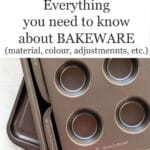
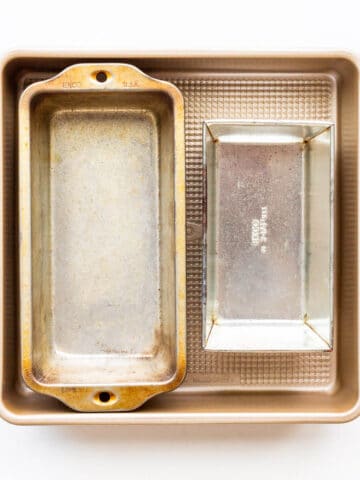
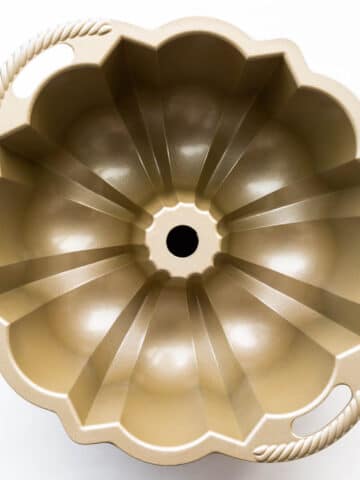
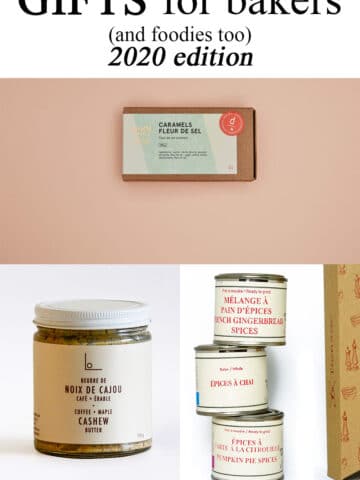
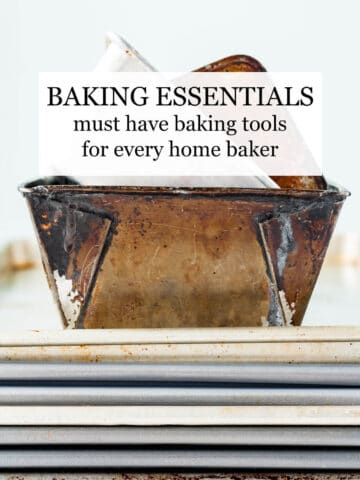
Kate Stokes says
Hi,
Do you need to reduce the temperature if your tin is fairly heavy ?
I would also appreciate your advice about my gem irons. Our house burnt down in the Black Saturday bushfires and we weren’t allowed to return for a few months. By then my gem irons were completely rusted. I’ve tried several things with no success. Would the heat have changed the cast iron ? It certainly melted aluminium !
Regards Kate.
Josie says
what about tin-lined baking pans from France?
Md.Moynul Islam says
Thanks for sharing a nice post.
Keith Peterson says
Excellent post, Janice! Explaining the "why's" really helps people make informed decisions. If I may comment on cake pans, also on Amazon is Crown Bakeware, made there in Canada. I donated all of my Chinese bakeware and bought these. I was able to lessen the baking time with a 3" depth with these and using one baking rod. Nice flat cakes, no cracks or domes.
I really enjoy reading about the science of baking, never boring and always informative. Thank you again!
Andrea says
Thank you for explaining the whys and why nots of each type of pan. You don’t just give your opinion, you explain the science behind it and that makes sense to me. I’ve been wanting to take a baking class and I think I just found one - The Bake School! Thank you so much.